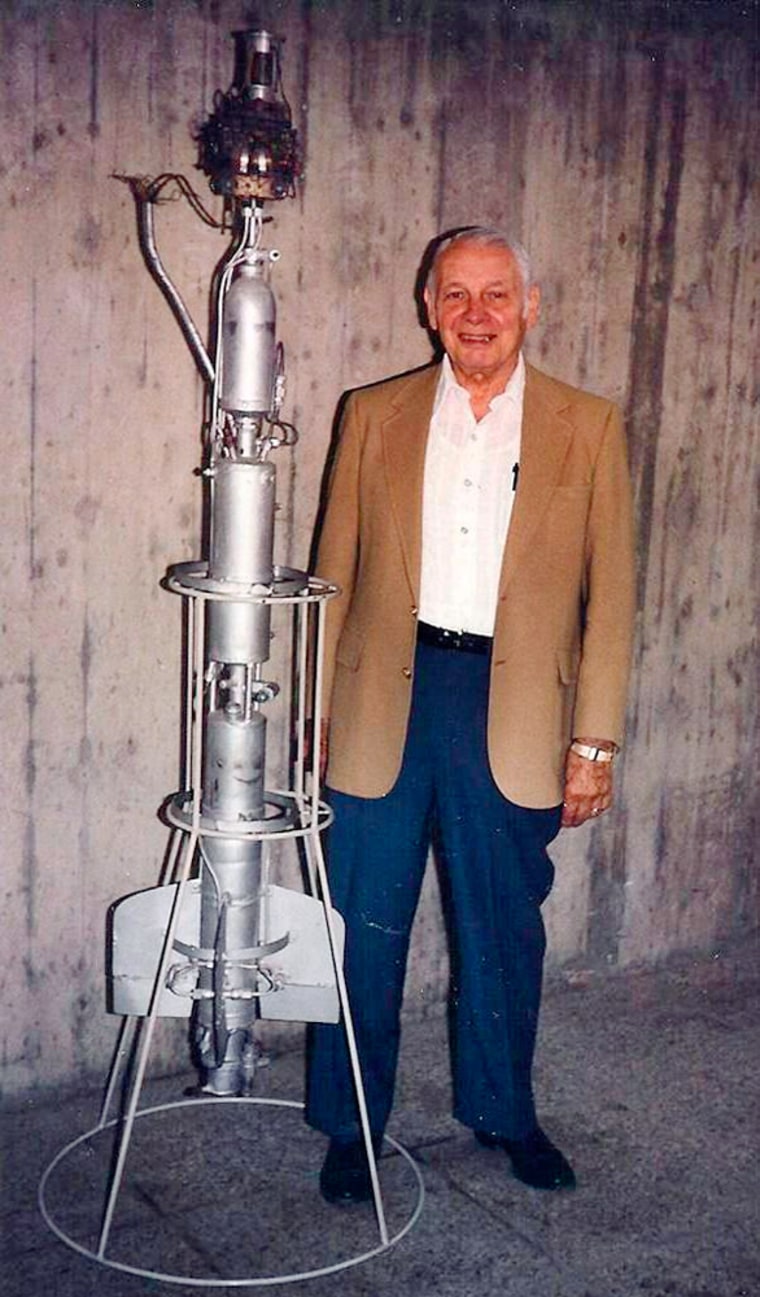Konrad Dannenberg, a German rocket scientist who was part of the Wernher von Braun team that helped put the first American astronauts on the moon, has died. He was 96.
His wife, Jackie Dannenberg, said he died Monday of natural causes at a Huntsville rehabilitation center.
Dannenberg had a role in developing America's key space rockets — the Redstone, Jupiter and Saturn V, which carried American astronauts to the moon in 1969.
Once part of Hitler's Nazi war machine, Dannenberg and von Braun team members were brought to the U.S. to compete against the Soviet Union for supremacy in space. For many, they were heroes in the space race when Apollo, propelled by the rocket they built, reached the moon.
Only a half dozen of the 118 German scientists who came to Huntsville in 1950 with von Braun are still living.
"We will be forever reminded of his accomplishments every time we look to the sky and see the moon," said Huntsville Mayor Tommy Battle.
Dannenberg, who retired from the NASA in 1973, became a speaker at Space Camp at the U.S. Space & Rocket Center program in Huntsville.
"Konrad came to us as a lecturer and a mentor, and he personally engaged with thousands of young people, taking his time to share with them his experiences of flying people into space," said Ed Buckbee, the center's first director.
During World War II, Dannenberg left the battlefield to work on the V-2 rocket at the German Army's research center at Peenemunde. The V-2 became a deadly and destructive missile launched at Allied targets.
In an interview with The Associated Press on the 30th anniversary of the first moon landing, Dannenberg said of all the rocket launches, the test launch of the V-2 on Oct. 3, 1942, stood out the most. It soared 53 miles high, just past the 50-mile point where space begins. It was the first rocket to break that barrier.
"At that time, it was clear it would be used by the military," Dannenberg said in 1999. "On the other hand, of course, it was a big step ahead, and if you look at the V-2 today and see it next to the Saturn V, you probably think it's tiny. But for us, it was a HUGE rocket, much bigger than any amateur rocket I'd ever seen or even imagined."
A public memorial will be Friday at the Space & Rocket Center. His wife said he will be buried in Maple Hill Cemetery next to his first wife, Ingeborg.
